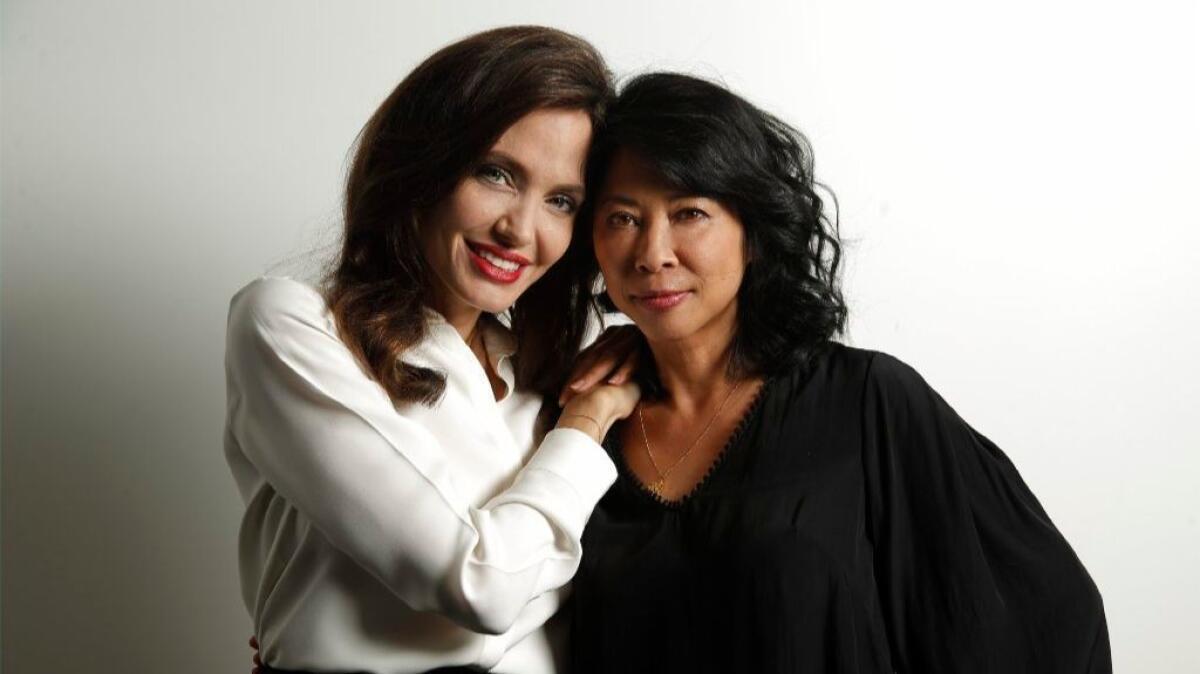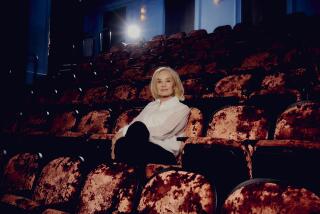Angelina Jolie and Loung Ung’s ‘First They Killed My Father’ mission won’t end anytime soon

Angelina Jolie and Loung Ung are sitting in a conference room in the confines of Netflix’s shiny new Hollywood offices. It seems like any other day and, in many ways, for these longtime friends this interview is exactly that, another opportunity to make sure the world doesn’t forget the horrors that occurred in Cambodia under the Khmer Rouge regime. It’s a mission that won’t end for either of them anytime soon.
Not only have the two women known each other for more than a decade, they are bound by their shared collaboration, the epic film “First They Killed My Father.” The film, released in September, adapted Ung’s 2000 fictionalized retelling of her family’s experiences. The celebrated work chronicles Ung’s childhood under the Khmer Rouge in the mid-1970s. Jolie directed the picture, which is Cambodia’s official entry for the foreign language Academy Award, and co-wrote the screenplay with Ung.
Until she helmed the 2011 Bosnian war drama “In the Land of Blood and Honey” Jolie bluntly admits she never saw herself as a filmmaker. It was after that film, however, that she began to wonder what types of stories she should tackle next. And that’s when she remembered her friend Ung’s novel and realized it was a story her son Maddox, whom she adopted from Cambodia, needed to experience.
“It wasn’t like, ‘What would make a cool movie?’ It was really, ‘What do I feel I want to spend years of my life on? What matters? What has affected me?’ It was very clear to me it was that book,” Jolie says. “And as Maddox [was] growing up, I really need him to understand [what happened] and felt the country hadn’t been speaking about it. It’s not as open and discussed as it should be.”
The longer Jolie and Ung converse, the easier it is to understand the friendship between them. The pair first met while they were both stuck in a monsoon while Jolie was on a humanitarian mission in the Cambodian countryside. Years later, Jolie asked Ung if she’d be interested in a movie version of her book and if she’d want to do a pass with her on the script. According to Ung, figuring out the storyline began over a three-day stint at Jolie’s home.
One item from the novel Jolie recalls insisting be included in the film was the blue shirt Ung’s mother hid for her children so they would never forget her or their lives before the Khmer Rouge took over the country. And, in fact, that shirt still exists today in a fire-proof safe in the Vermont home of Ung’s brother.
Video Q&A’s from this season’s hottest contenders »
“The kids overheard it and then they surprised her with a gift of a blue silk shirt,” Jolie recalls of her children. “They would throw her random birthday parties because she doesn’t know her birthday.”
Ung had explained to Jolie’s kids that she doesn’t know the date of her birth because records were destroyed, but that her brother wrote it down as April 17.
“The day the Khmer Rouge took over the country,” Ung clarifies. “I never felt that could sound right. When you’re turning 16, you want to have a 16th birthday party, but you know around the world people are lighting candles and remembering 2 million lives lost. How do you actually have a cake?”
Jolie adds, “We give her new [birthday dates] every year. We were talking about it just yesterday, trying to figure out when your next one is.”
One of the most remarkable aspects of Jolie and Ung’s screenplay is how little exposition there is. Almost the entire story is seen through the eyes of young Loung, played by Sareum Srey Moch.
“The tricky thing about this one was you can’t know that much more than she knows, and she’s a child,” Jolie says. “You can’t know her inner thoughts, which a lot of the book [allowed you to] fill in the politics because you could write what was going on or inner thoughts. You can’t use that. We decided no voice-over. We have to just be her and even if there’s a whole section where she doesn’t understand what’s going on and the audience is confused, so is she.”
That journey finds the movie’s depiction of Loung trekking through forests and rice fields where millions of urban Cambodians were sent to work as the authoritarian regime attempted to turn the clock back and remove all Western influence from the nation.
“When you have other wars, you have prison camps and they have walls. In Cambodia, the whole country was a prison,” Jolie says. “There were no walls. There’s nowhere to go to be safe. The entire country became a prisoner.”
The heartache of the Khmer Rouge era still brings back painful memories for many, but when it came to film the scenes where Cambodians were ordered to evacuate Phnom Penh, the capital city, Jolie was taken aback by what the survivors wanted to teach their children.
“Even with the exodus scenes, the extras, that they came as families as well,” Jolie says. “They brought their own kids. I was talking to some extras who remember the first evacuation that they did. Now they’re bringing their kids and grandkids, to show them what it was like. That was touching.”
See the most read stories this hour »
More to Read
From the Oscars to the Emmys.
Get the Envelope newsletter for exclusive awards season coverage, behind-the-scenes stories from the Envelope podcast and columnist Glenn Whipp’s must-read analysis.
You may occasionally receive promotional content from the Los Angeles Times.









